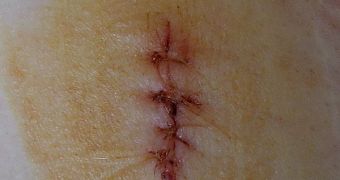Staphylococcus saprophyticus and Escherichia coli are two opportunistic pathogens that show a knack for infecting wounds, even in the hospital. In a bid to develop a method of preventing that from happening, scientists have created a type of wound dressing that uses nanoparticles.
The tiny structures contain chitosan, which gives them a pronounced antimicrobial effect. In addition to preventing infections, the particles may also contribute to facilitating wound healing, experts say.
A new investigation into the potential applications of chitosan nanoparticles was led by experts at the Fairleigh Dickinson University, in Teaneck, New Jersey, under the supervision of Mihaela Leonida.
In a paper the team published in the latest issue of the International Journal of Nano and Biomaterials, experts write that chitosan is derived from the main component of shrimp shells, chitin.
Chitosan is a natural, non-toxic and biodegradable polysaccharide, which means that it will cause no side-effects of its own when applied to a wound. It will also break down without releasing harmful compounds, the investigators add.
Thus far, the material has been used by orthodontists and the food packaging industry, but Leonida believes it may be time to move on to more advanced applications. In the future, she says, chitosan may even be used in antimicrobial textiles, such as clothes worn by doctors and nurses.
Studying the way in which the compound interacts with bacteria – preventing them from infecting open wounds – could reveal data that might lead to the development of more effective antibacterial agents.
The latter could then be used to fight off other pathogens, maybe even drug-resistant ones. However, that application is still a long way off. But perhaps one of the most interesting discoveries in the new study is that chitosan nanoparticles have skin-regenerating properties.
This means that the cosmetic industry will start investigating the use of this compound in new generations of anti-aging skin care products. These would have the advantage of not harming the skin in any way, but rather simply help it become rejuvenated, e! Science News reports.

 14 DAY TRIAL //
14 DAY TRIAL //